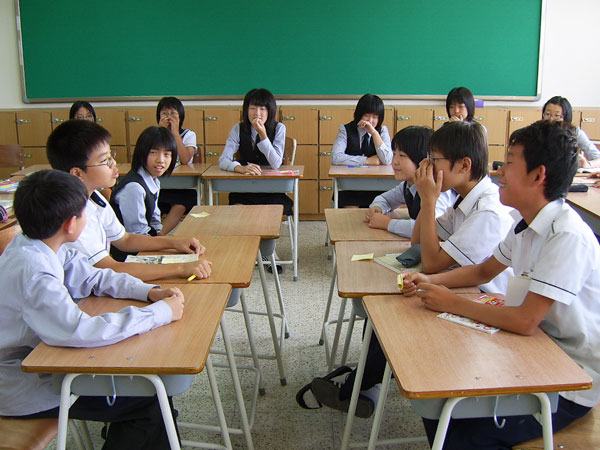
The situation is dire: Enemy soldiers have invaded your village and plan to kill all the remaining residents. You have taken your baby to the basement of a nearby house, where you are hiding with a group of neighbors. The soldiers are close; you can hear them searching for survivors. Your baby starts to cry. Should you smother the baby to save yourself and your neighbors?
When presented with predicaments like this, Koreans and Americans usually reach the same conclusion – yes, it is appropriate to smother the baby. The two cultural groups tap different brain regions to resolve the problems, however, according to a study in the February issue of Behavioural Brain Research by Hyemin Han, a doctoral student in the Developmental and Psychological Sciences program at the Stanford Graduate School of Education.
"His questions are ones that no one has addressed using neuroimaging," said co-author Gary Glover, a Stanford professor of radiology, neurosciences and biophysics who advised Han on the analyses.
Han scanned the brain activity of eight Koreans and eight Americans while they considered 60 problems.
Korean participants showed greater activity in brain regions associated with intuition, approximation and emotions: the putamen, the dorsolateral prefrontal cortex and the postcentral sulcus. Han posits that Korean participants consciously controlled their initial emotional reactions (such as disgust) to reach a decision that protected the largest number of people.
In contrast, Americans took longer to ponder dilemmas that involved physically harming particular people. They also relied on brain regions associated with conflict management and, to a lesser degree, novelty: the anterior cingulate cortex and the frontopolar cortex. Han hypothesizes that Americans are exposed to socio-personal conflict more often than Koreans, whose society values social harmony over the expression of individual desires.
The results could also reflect the effects of moral education courses that are mandatory in Korea but unfamiliar to most Americans. Students learn specific values such as tolerance, cooperation, justice and love of nation. They also study the history of Western and Korean moral thought. The results of the Korean participants in the Stanford research may reflect their previous exposure to similar problems, Han said.
Functional magnetic resonance imaging (fMRI) scans showed which brain regions used more oxygen and were therefore more active. Han cautioned that the results illustrate average characteristics of the different groups, rather than prove that an individual uses a particular brain region to consider a particular problem.
Glover said Han's results are exciting, but he would like to see an expansion of the study with more participants.
Han's study is among the first to compare neural activity of moral reasoning between different cultural groups. Other researchers have used fMRI to identify the brain regions involved in moral thinking in a single cultural group or compared the moral thought processes between cultures using survey or other, non-imaging, methods.
Han formerly taught moral education in Korea. He was motivated to use fMRI to analyze decision making after he grew frustrated with the limits of surveys. "It's very hard to figure out which internal processes they're using," he said.
Eventually, Han said he hopes to improve the effectiveness of moral education programs, possibly by examining the processes used by exemplary students. He also intends to conduct similar studies with participants from a single culture, to determine the effect of education.
___
Becky Bach is an intern at Stanford News Service.
Subscribe to our monthly newsletter.